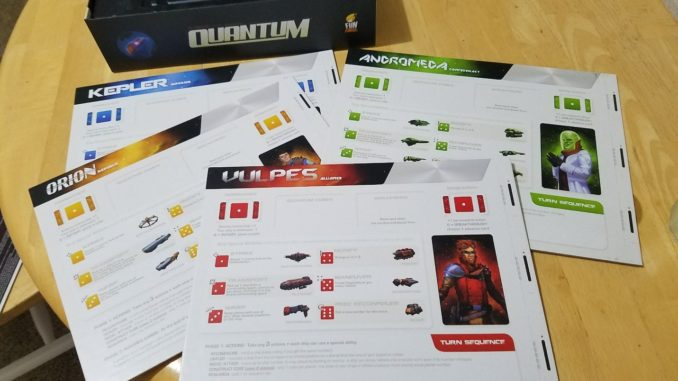
If you like Sci-Fi, you need to play Quantum. Published in 2013 by Funforge, this game of system conquest, strategy, and combat is a perfect mixture of fun and forethought. Conquer all the planets in a solar system before the other players to assert your dominance over the galaxy—but know that your opponents won’t go down without a fight.
Players: 2-4
Year Published: 2013
Recommended Ages: 13+
Time to Play: 60 minutes

Players choose the map they want to play—either pre-designed maps from the playbook, or random maps of their own devising—and set up the board with the required number of planets and quantum cubes. They roll the dice to determine what type of ship each die will be and place them in orbit around their first conquered planet.
That’s when the real fun begins!
The goal of the game is to be the first player to place all your quantum cubes, ostensibly conquering a planet for your empire. There are numerous ways to do this as you play as the Vulpes Alliance, the Andromeda Confederacy, the Kepler Imperium, or the Orion Republic.


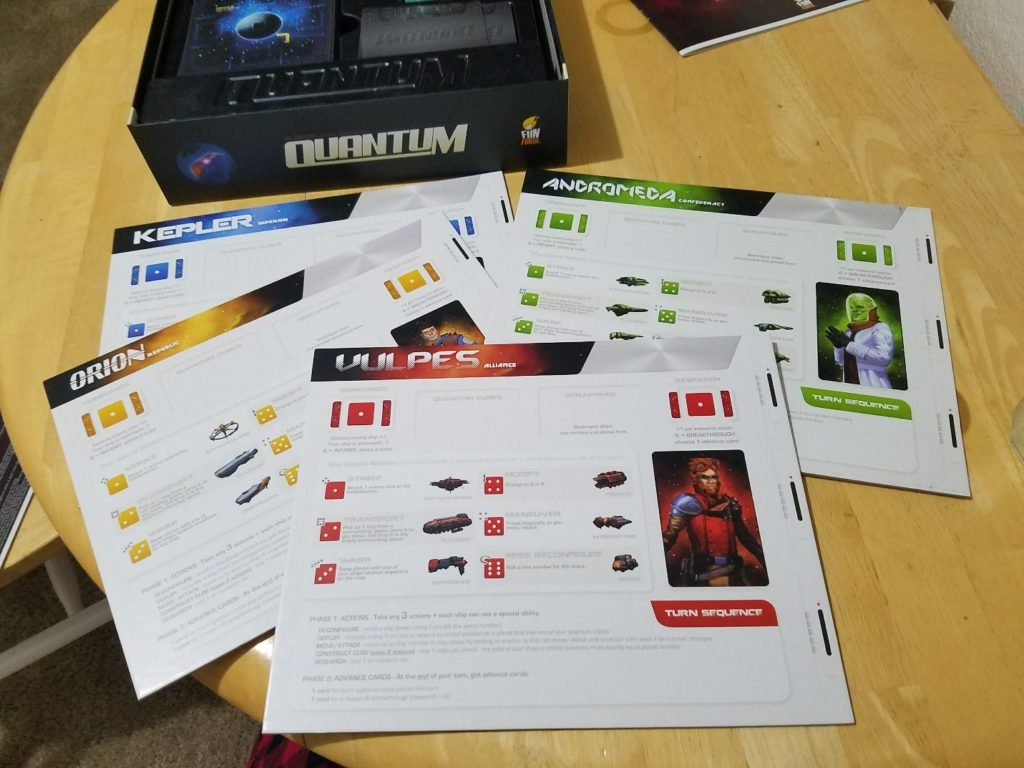

While each faction starts off with the same abilities (these fun character cards are just for flavor), as players gain research or dominance points, they can add power cards to their faction, developing a personality and flavor all their own.
Dominance is gained by defeating other ships, research is gained by taking actions. You can draw gambit cards or command cards—gambit cards resolve immediately; command cards stick to your faction permanently—to gain advantages over other players and specialize your race. Players move their dice ships around the board, fighting one another and building quantum cubes on planets when the numbers on the ships perfectly match those on the tile.
The first person to play all their cubes wins! It’s as easy and as enjoyable as that.


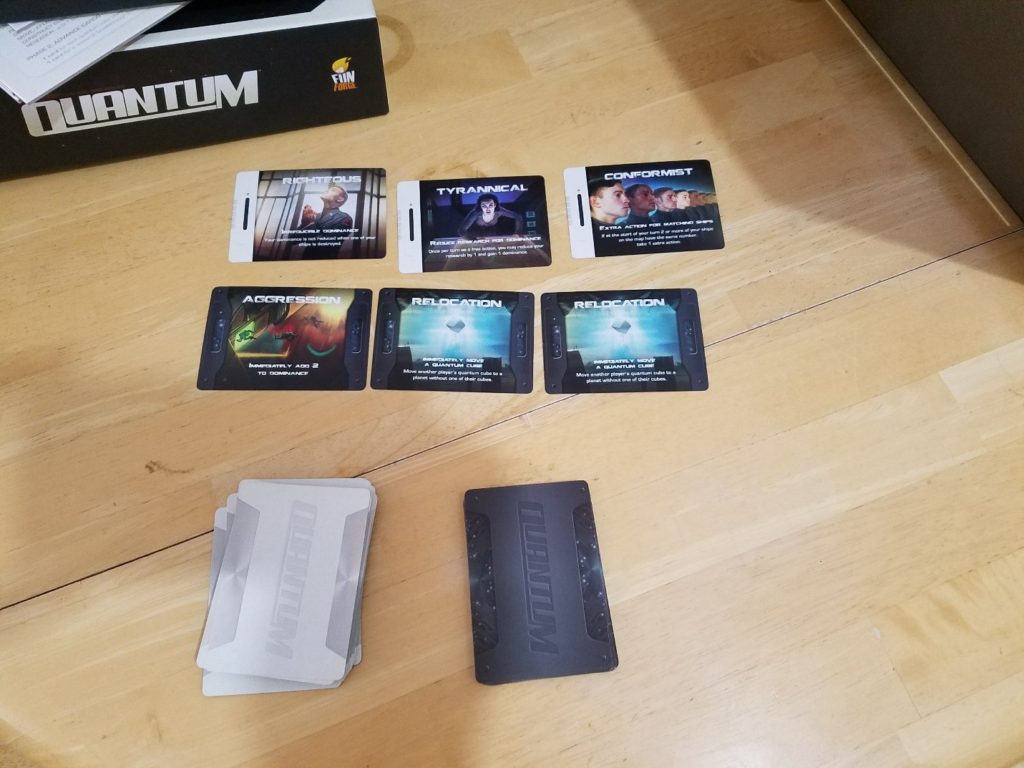

Mechanics (5/5)
I haven’t found a real hiccup worth complaining about in my experience playing this game.
When you want to attack, you occupy the same space as another player’s ship. The attacker rolls the attack die, the defender rolls the defense die, and you add that number to the number of the ship attacking or being attacked. The lowest number wins. Destroyed ships go to a player’s graveyard where they can be redeployed for an action next turn, and if the attacker was victorious they increase their dominance points by one.
A lot of the strategy comes in the form of your ships’ special abilities: on the player sheets, you’ll see that each ship 1-6 has a special ability they can perform. Swap with a 3 anywhere on the board to pull one over on your opponents; get extra moves by transporting another vessel on board a 2. You can also use an action to roll the die and reconfigure it to whatever number you roll, which adds an element of randomness.
Every action meshes with the theme of space exploration and conquest, and the rules are incredibly intuitive and easy to understand. This is an easy game to learn and teach, and doesn’t lose its replay value as you can play with a different strategy or map every time and change the scenario.


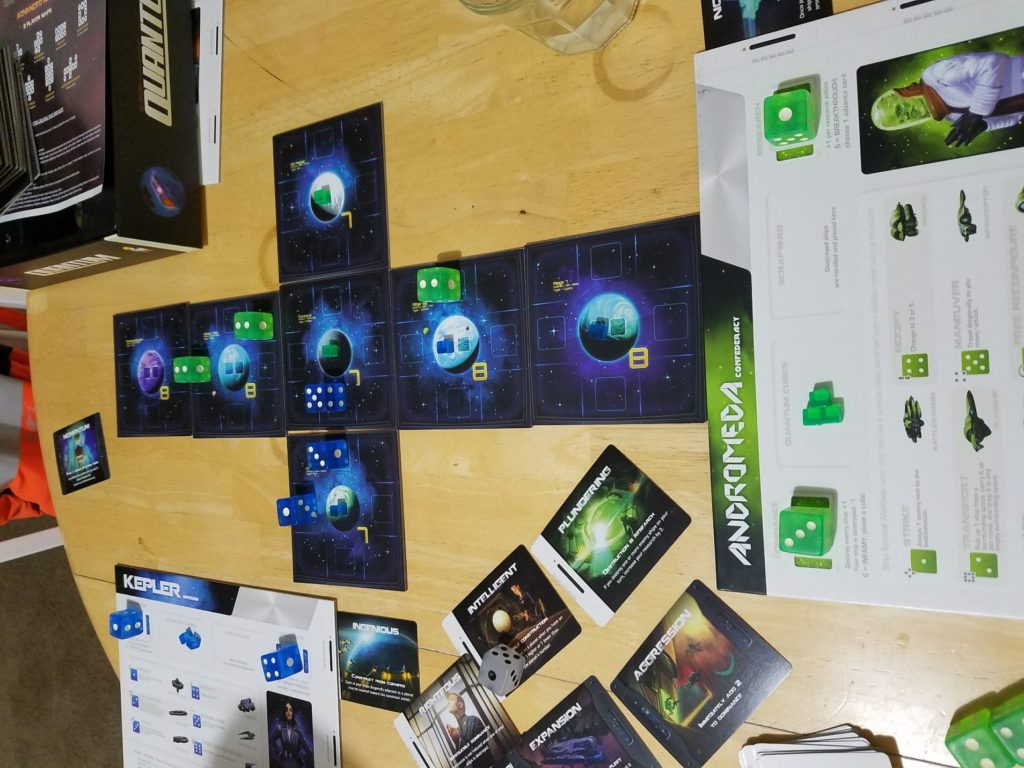

Gameplay: 5/5
I contemplated giving this a 4/5 because there is a high amount of randomness and chance that goes into the combat, which can be frustrating to someone who really enjoys strategy games; but I decided it’s a good thing overall as far as complexity goes. It makes the game more accessible to those who don’t necessarily love strategy-heavy slogs, and expands the age-range and family-friendly feel of the game.
Instead of keeping track of troop numbers or organizing complicated units, the dice are the ships, and the number on the dice determines the movement and attack strength of those ships. There are very few times when you have to flip back through the rulebook to recall a rule or action, and the game experience is entirely based around the player dynamics.
It can be a quick game of two players racing at breakneck speeds to conquer planets, or it can be a leisurely four-player conquest where you can do more sneaking around and backstabbing with more players involved.


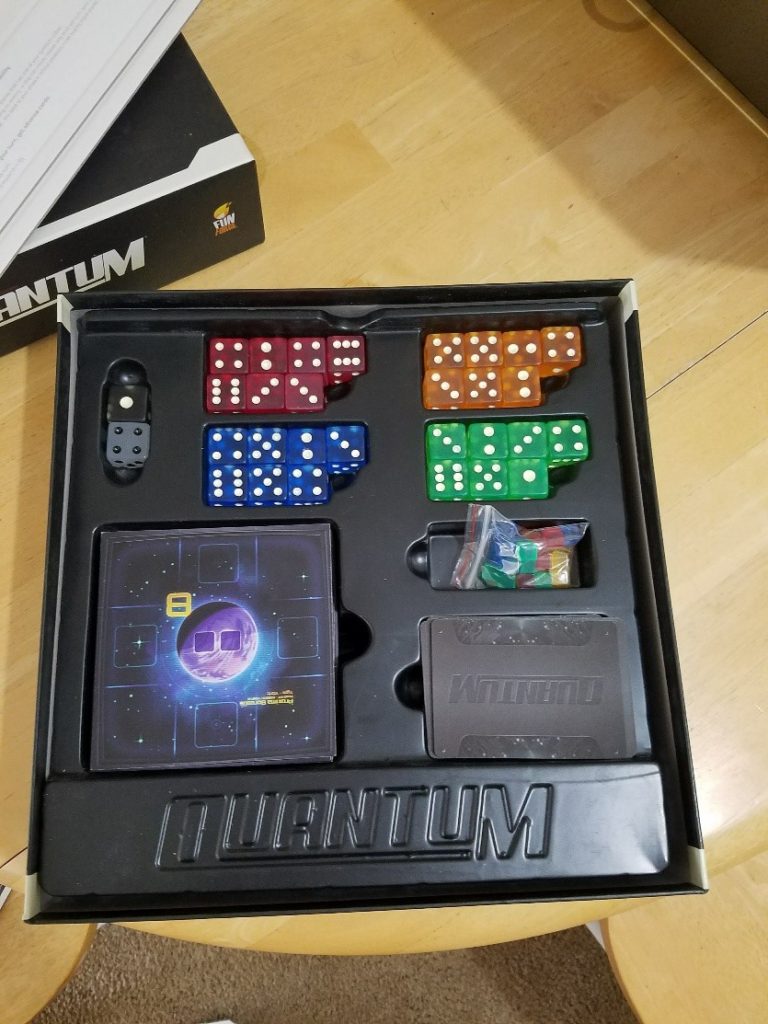

Components (5/5)
Look at these dice!
They’re so satisfyingly crafted. They’re frosted, large enough to be weighty and feel amazing when you throw them. The tiles are exquisite and sturdy, and the cards have beautiful artwork. The little translucent cubes look delicious—I have no other words to describe the feelings those colorful little quantum cubes elicit. They look like a space snack and they’re wonderful.
This game is simple and elegant: it would have been easy to add lots of components to the game—have actual ship figurines, dice, cards, what have you—but they condensed everything down to the bare minimum, and it works really well for them.Even the box insert is perfectly formed to slot every piece right where it belongs.
This is a beautiful minimalistic game that can be enjoyed by a wide range of people. I definitely recommend it to anyone, from hard-core sci-fi fans to casual players.


Be the first to comment